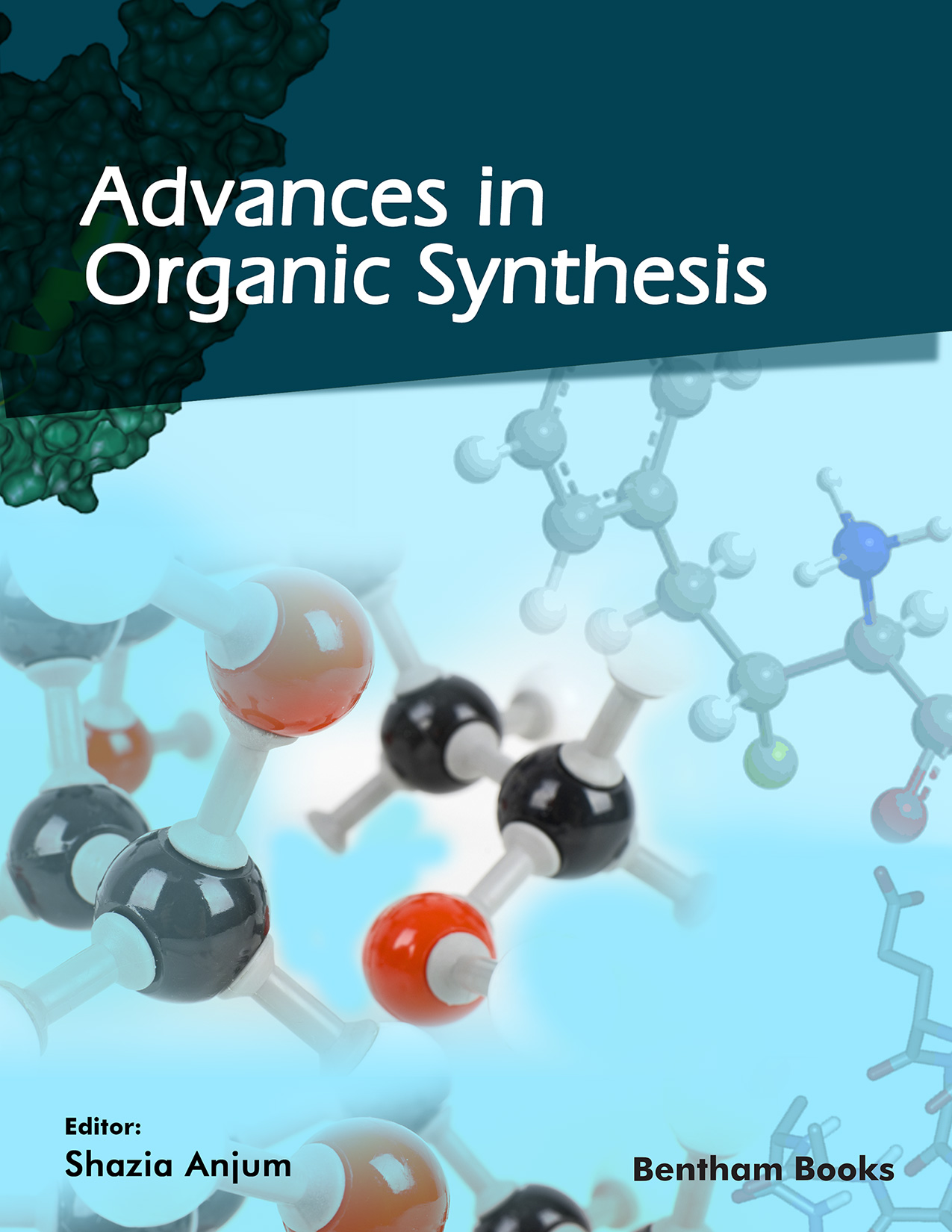Preface
The series ‘Advances in Organic Synthesis’ are a dedicated set of different volumes covering all contemporary developments in organic synthesis. The contents of each volume are thoughtfully picked to capture the dire need of the readers and at the same time, it is rewarding to quench the thirst of researchers. The first chapter of volume 18 describes the latest syntheses and biological activities of anti-cancer Ferrocenes. Mehra and Lumb gave a brief account of the stable aromatic nature of ferrocene and bioferrocene compounds that possess reversible redox properties, and low toxicity that has also revolutionized the area of medicinal organometallic chemistry.
Masdeu
et al. compiled a review on the synthesis of fused nitrogenated heterocycles using intramolecular Povarov Reaction. This strategy helped in synthesizing tri-, tetra-, penta-, hexa-, hepta-and octacyclic-fused heterocyclic compounds of diverse biological activities. While Singh and Kumari in their chapter 03 described the recent applications of barbituric acid as a synthetic precursor for the synthesis of various bioactive compounds. Barbituric acid can be employed in the condensation reaction as well as 5-/6- membered oxygen/nitrogen-containing heterocycles.
The use of ionic liquids (ILs) in organic syntheses has made a renaissance. It has revolutionized the entire trajectory of the synthetic pathway. In Chapter 4, Khokhar
et al. described emerging applications of ILs as green solvents, green catalysts, and in coupling reactions. It depicts their remarkable use in environmentally benign organic synthesis which is the main focus of discussion in this chapter.
The last three chapters of these volumes are exclusively dedicated to the newly emerging field of nanotechnology. For example, chapter 05 of this volume illustrates the advanced use of Zinc oxide (ZnO) nanomaterials for biomedical applications. In this chapter, Bhuiyan
et al. showed that ZnO nanomaterials could be developed by the organic synthesis process for excellent biocompatibility, selectivity, sensitivity, good chemical stability, non-toxicity, and fast electron transfer properties in a cost-effective manner. While Higazy
et al., in their chapter 06 covered the contemporary development of nanocomposite hydrophobic coatings for effective corrosion protection. Organic-inorganic nanocomposites can be employed as outstanding anti-corrosive coatings to provide longevity of steel construction service. Overall, they gave an overview of present and advanced research developments, such as graphene nanocomposite surfaces, etc. Interestingly, the last chapter of this volume by Zdiri
et al. covers the morphologies and properties of virgin and waste polypropylene nanocomposites. The article gives information on different types of nanoparticles used for the enhancement of thermo-mechanical and physical behaviors of PP nanocomposites. Moreover, it also discusses the improvements in the properties of waste PP by nanoparticles’ incorporation and the influence of clay nanoparticles on waste PP-based nanocomposites.
I hope that the readers will enjoy reading this volume which covers contemporary developments in organic syntheses. I would like to express my sincere thanks to the editorial staff of Bentham Science Publishers, particularly Ms. Asma Ahmed and Mr. Mahmood Alam for their constant help and support.
Shazia Anjum
Institute of Chemistry
The Islamia University of Bahawalpur
Pakistan

